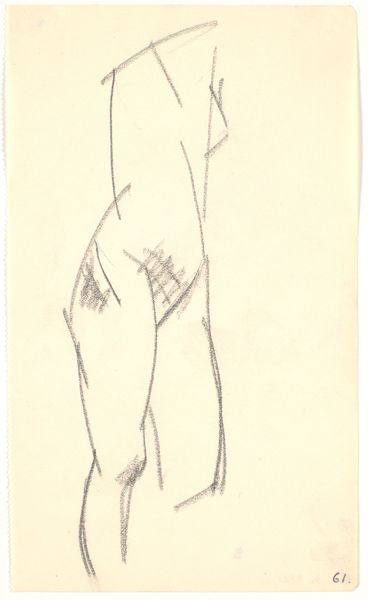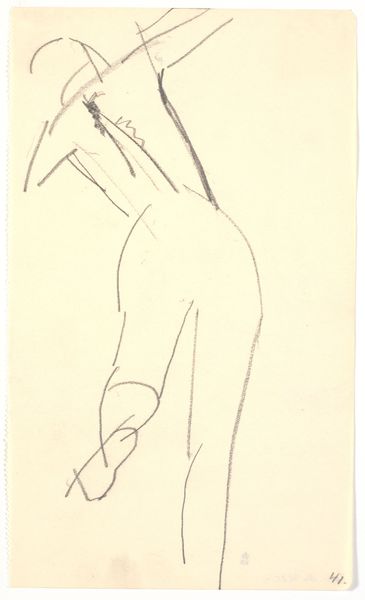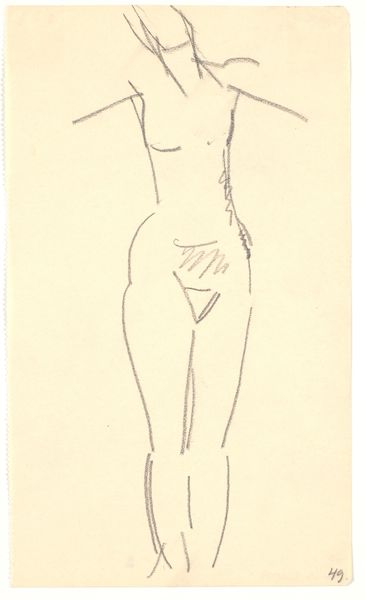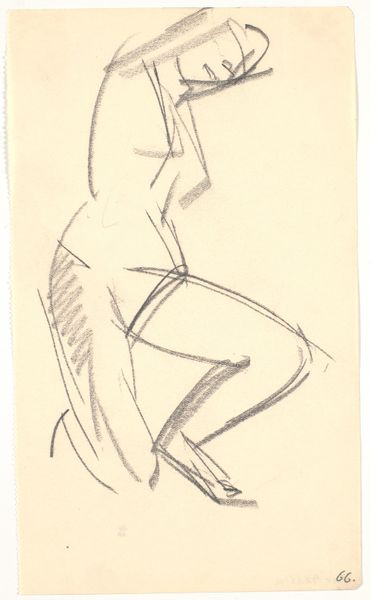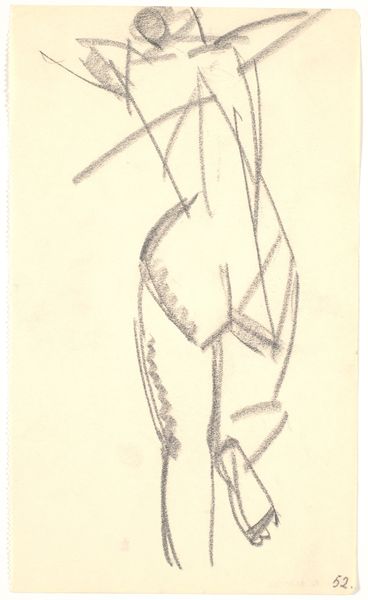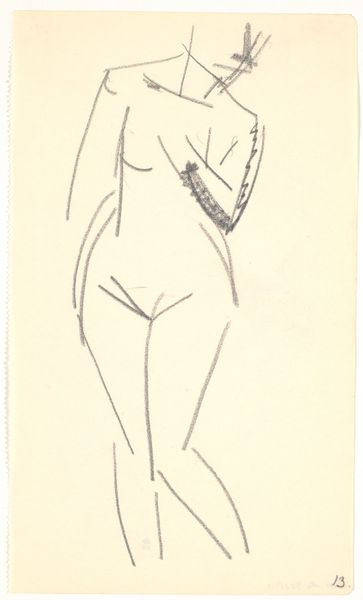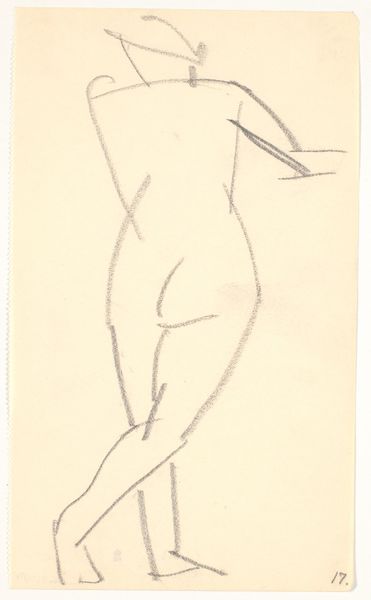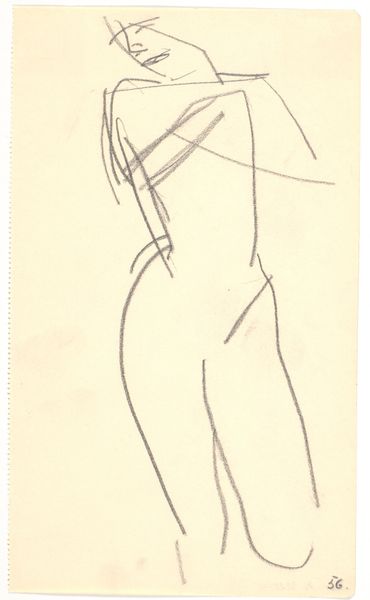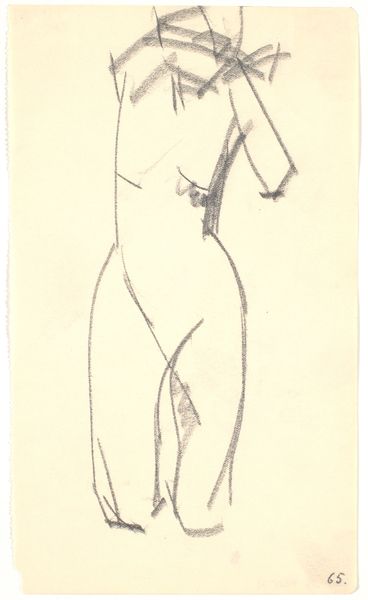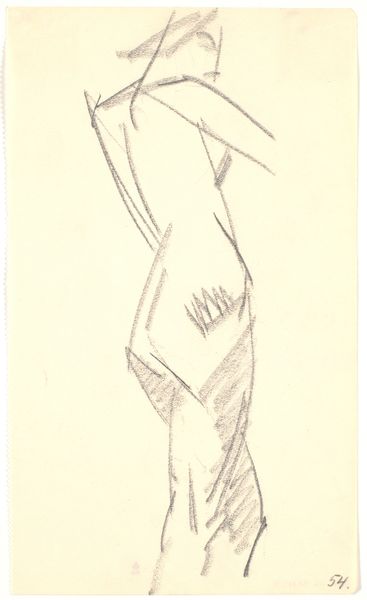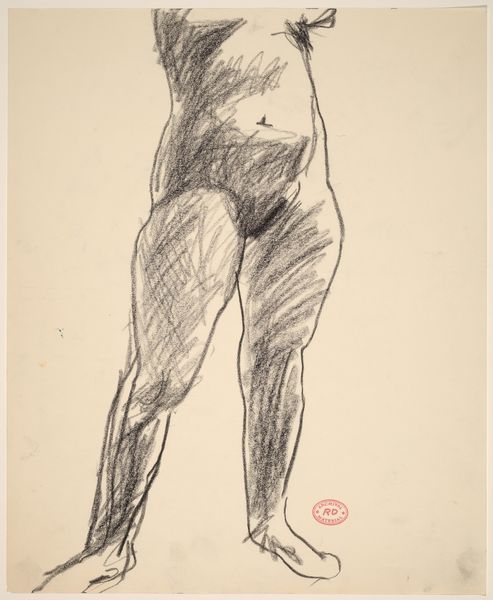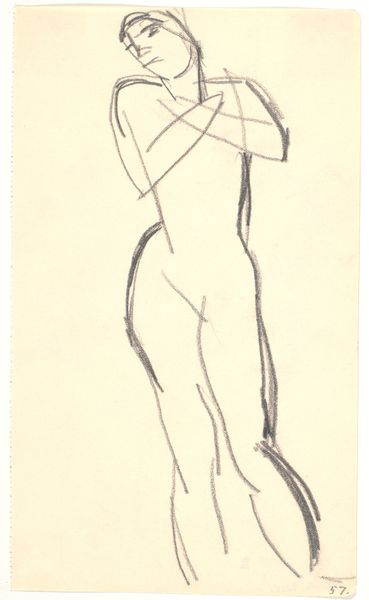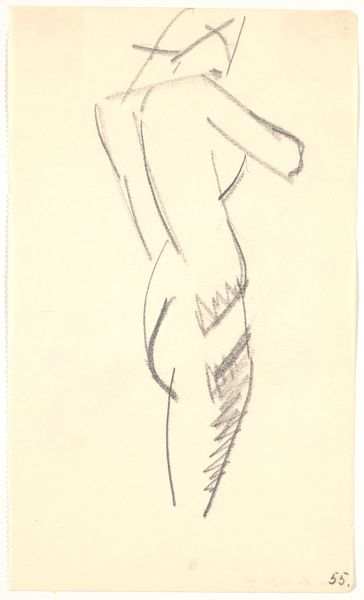
drawing, pencil
#
portrait
#
drawing
#
ink drawing
#
pencil
#
expressionism
#
northern-renaissance
#
nude
#
modernism
Dimensions: 209 mm (height) x 124 mm (width) (bladmaal)
Curator: A somewhat melancholic sketch, wouldn't you agree? So few lines, yet so expressive. Editor: The figure definitely carries a weight, perhaps fatigue? I'm struck by how economical Isakson is with his materials here. It is a pencil and ink drawing from 1914-1915, entitled "Standing Model, Seen From the Back." Curator: Yes, and that is precisely the effect he achieves, the vulnerability. Back then, drawing was a fundamental form of labor. Here it almost looks like he wants to depict her not only nude, but vulnerable by stripping away layers and paring back the materiality. You also see that it is an institutional product on specific paper; that number there "53." This wasn't just free labor to explore art; the conditions were extremely regimented in both materials and artistic output. Editor: An interesting point. The posture itself echoes artistic representations across millennia. I am specifically drawn to the marks at her thigh: are they symbolic in any way or purely functional to give form? What statement is the artist trying to make with this bold, reductive expression? There are precedents, especially when considering the resurgence of interest in the Northern Renaissance. Curator: The image resonates, it captures a mood, undoubtedly. Isakson carefully chose, at a time of enormous upheaval, how he represented women in relationship to institutional structure. Each line implies effort and thought as the means of material representation were evolving. The way the light catches, where it is placed in terms of the body: its back becomes a political canvas. I read a lot into this material drawing... Editor: Absolutely, and considering its place in art history, in the gallery's broader collection here, this figure echoes others, yes, but carries its own potent symbolism. Curator: Ultimately, in front of Isakson's piece, we both observe an act of production embedded within broader sociopolitical discourses that, as a representation of labor in society, raises important and uncomfortable questions. Editor: Well said! A quick sketch then that inspires endless dialogues across time.
Comments
No comments
Be the first to comment and join the conversation on the ultimate creative platform.
